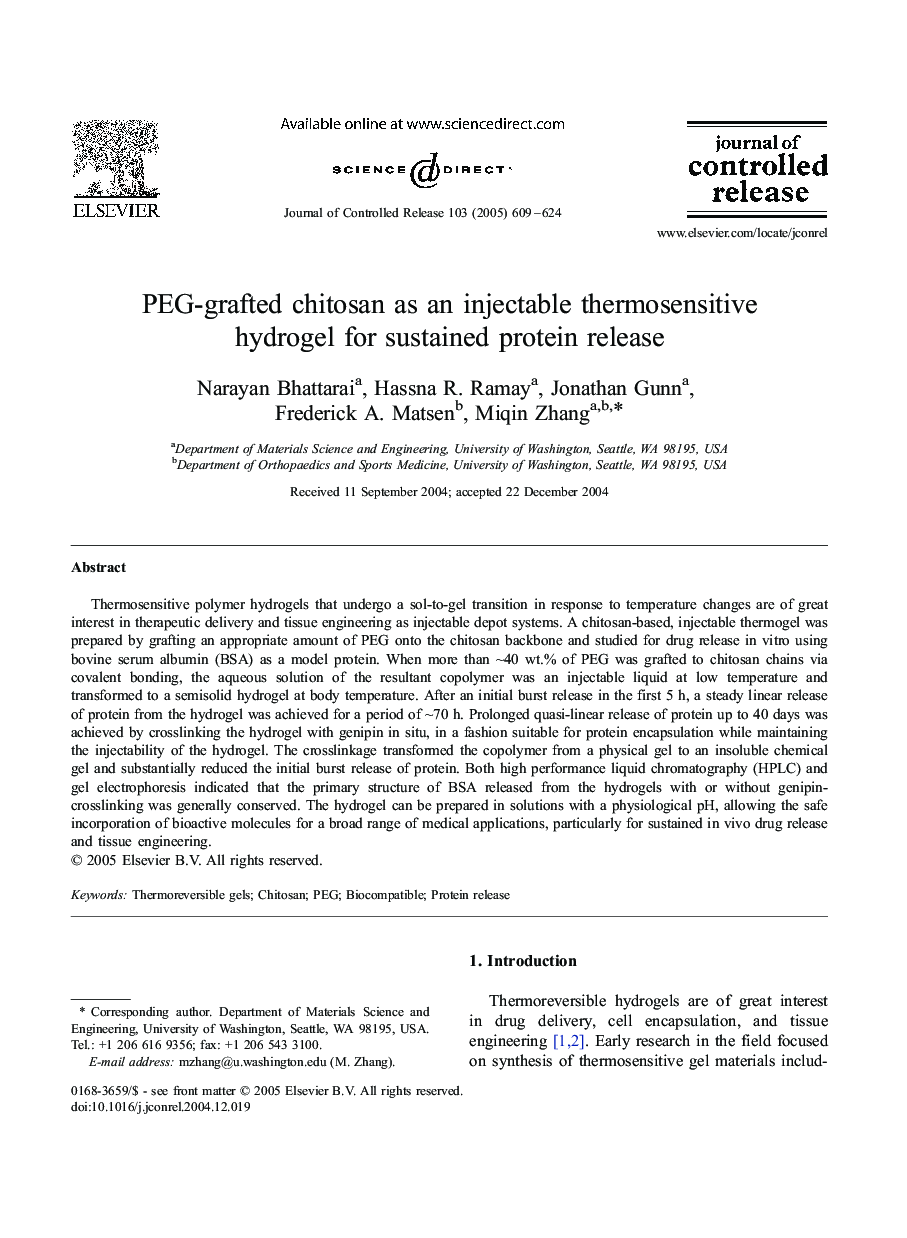| Article ID | Journal | Published Year | Pages | File Type |
|---|---|---|---|---|
| 10613575 | Journal of Controlled Release | 2005 | 16 Pages |
Abstract
Thermosensitive polymer hydrogels that undergo a sol-to-gel transition in response to temperature changes are of great interest in therapeutic delivery and tissue engineering as injectable depot systems. A chitosan-based, injectable thermogel was prepared by grafting an appropriate amount of PEG onto the chitosan backbone and studied for drug release in vitro using bovine serum albumin (BSA) as a model protein. When more than â¼40 wt.% of PEG was grafted to chitosan chains via covalent bonding, the aqueous solution of the resultant copolymer was an injectable liquid at low temperature and transformed to a semisolid hydrogel at body temperature. After an initial burst release in the first 5 h, a steady linear release of protein from the hydrogel was achieved for a period of â¼70 h. Prolonged quasi-linear release of protein up to 40 days was achieved by crosslinking the hydrogel with genipin in situ, in a fashion suitable for protein encapsulation while maintaining the injectability of the hydrogel. The crosslinkage transformed the copolymer from a physical gel to an insoluble chemical gel and substantially reduced the initial burst release of protein. Both high performance liquid chromatography (HPLC) and gel electrophoresis indicated that the primary structure of BSA released from the hydrogels with or without genipin-crosslinking was generally conserved. The hydrogel can be prepared in solutions with a physiological pH, allowing the safe incorporation of bioactive molecules for a broad range of medical applications, particularly for sustained in vivo drug release and tissue engineering.
Related Topics
Physical Sciences and Engineering
Materials Science
Biomaterials
Authors
Narayan Bhattarai, Hassna R. Ramay, Jonathan Gunn, Frederick A. Matsen, Miqin Zhang,
